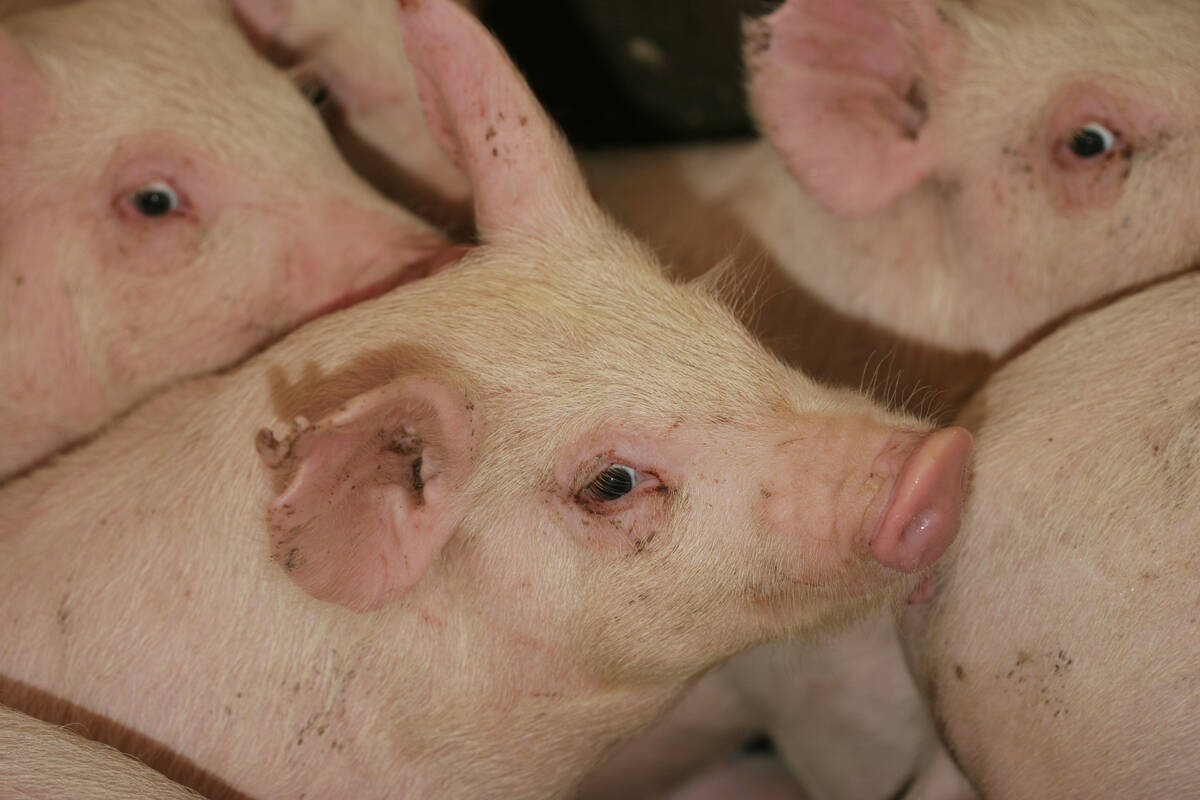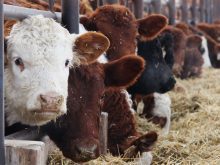Cattle are often grouped and sold in consistent colour patterns at auction sales and herd dispersals.
Why is that?
After all, knowledgeable cattle producers and others in the field often say it’s what’s beneath the hide that really matters.
Feedlots that buy directly from producers are more concerned with the phenotype or makeup of the cattle and not their colour. Profitability mostly depends on rate of gain, feed efficiency and resistance to disease.
Colour is not a factor in profitabilty except when it comes to selling feeders or breeding stock.
Read Also

The Western Producer Livestock Report – September 25, 2025
The U.S. national live price average for barrows and gilts was $81.21 Sept. 17. It was $78.37 Sept. 9. U.S. hogs averaged $106.71 on a carcass basis Sept. 17, up from $106.10 Sept. 9.
Purebred breeders find it necessary to try to raise bulls that throw consistent colour patterns or the most recent colour trend.
They need to do this because of the desire for colour consistency. Put another way, they must worry about the discounts that result from having oddball colours in the group.
Feedlot and livestock buyers should ask themselves what’s more important: more cattle from the same location with a few colours, or more cattle with a uniform colour pattern but acquired from multiple locations?
There is absolutely no guarantee that consistent colour pattern ensures equal performance.
Most breeds have changed colour over the last few years to keep up with market trends. In the past, black cattle received a discount in Canada even though quality was equal to anything on the market.
That trend changed and now a solid pattern and black colour associated with Angus cattle is prized. This prompted most breeds, with the exception of Herefords, to develop a solid black line.
It is now difficult at times to definitively know whether you have a black Gelbvieh, Limousin, Salers or Simmental animal. Even Charolais went from completely white to red to black. All this effort was done in the name of having a solid colour pattern.
I realize that in some cases colour identifies dairy breeds such as Holstein, Jersey and Brown Swiss as a phenotypically different animal, but surely our eyes can also discern the different conformation and muscle patterns.
I worry that purebred breeders have had to concentrate so much on colour to meet the demands of commercial producers that more important traits become secondary.
Commercial producers get their message from order buyers on consistent colour pattern. A lot of the branded Angus beef programs for meat really mean black hided cattle, whether the percentage of Angus is high or, in many cases, low.
All this effort is made for colour, and yet beef feedlots in Western Canada are full of cattle with every colour in the rainbow. They would have been bought at different prices yet are all finishing in the same pen together. Quality, good or bad, is present regardless of the colour.
Of course, hide colour can be a health issue. For instance, there is a far greater incidence of eye problems such as pinkeye or cancerous eyes when white pigment is present around the eyes.
Herefords and traditional Simmentals have selected for this pigment and many of them now have prominent dark goggles around the eyes.
Likewise, dark scrotums and udders have fewer issues with sunburn.
Veterinarians rarely see cancer eye in black cattle.
Cattle that get into feed that damages their livers can become susceptible to sunburn. Animals with white areas will burn and peel because they lack the melanin pigment in their skin to protect them.
Crosses of black cattle with light Simmental or Charolais cattle will sometimes produce what are referred to as grey, rat-tailed offspring. Not all greys are like this; only a few. They have a distinct, small, almost hairless tail and thin curly hair.
Most of these cattle will do well, but some will suffer from cold and won’t do well in prairie winters because of their thin hair. The lack of a long, fly-swatter tail also means flies and other insects will bother them more in the summer.
True greys do as well as other cattle but are discounted at auction, even though they are a true testimony to hybrid vigour. The only purebred grey animal is the Murray Grey, but they are relatively rare in Canada so almost all greys you see are crossbreds.
Cow-calf producers should consider keeping greys as replace-ments because they fetch less at auction but when crossed correctly often produce calves that revert back toward black or red depending on what bull is used.
Producers should seek markets where cattle are bought based on quality rather than colour because colour fads come and go but the quality under the hide never changes.
Roy Lewis is a veterinarian practising in Westlock, Alta.














